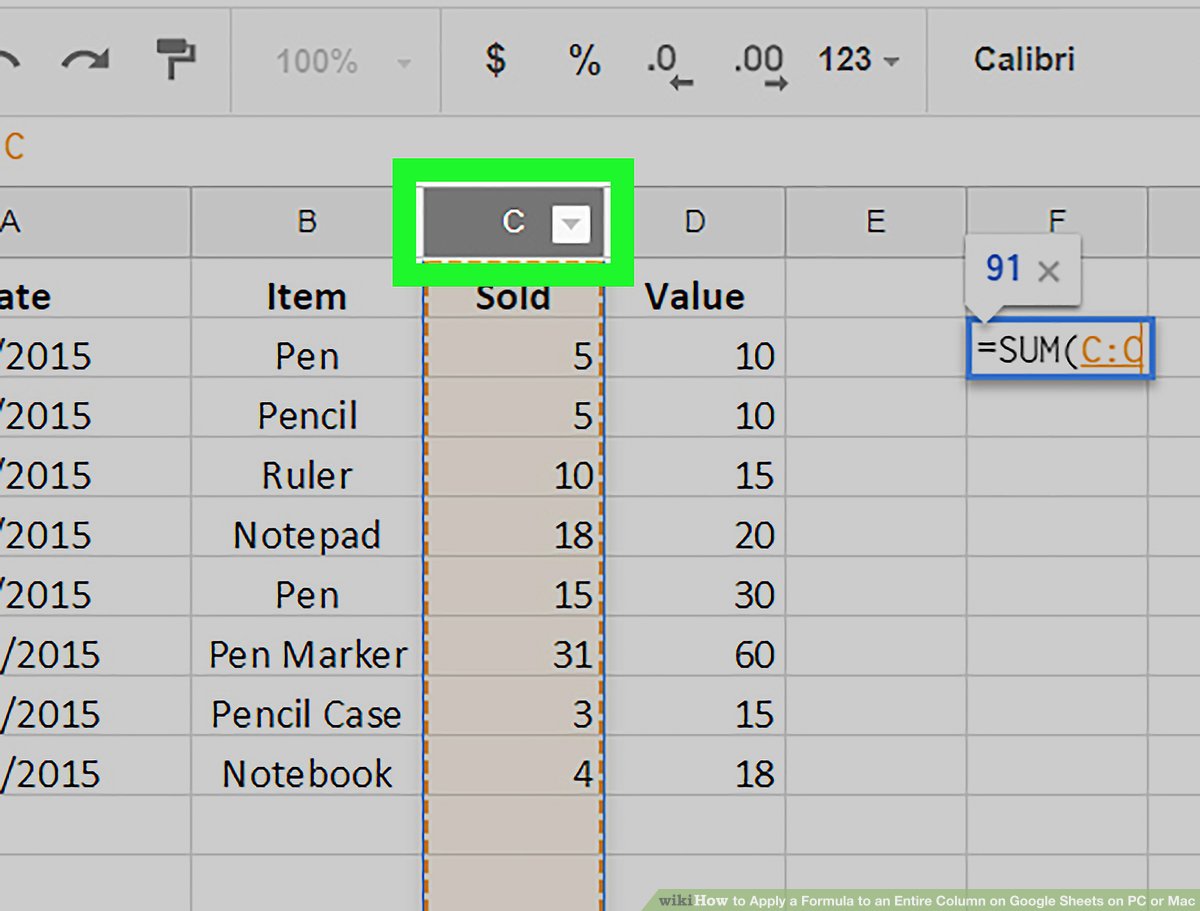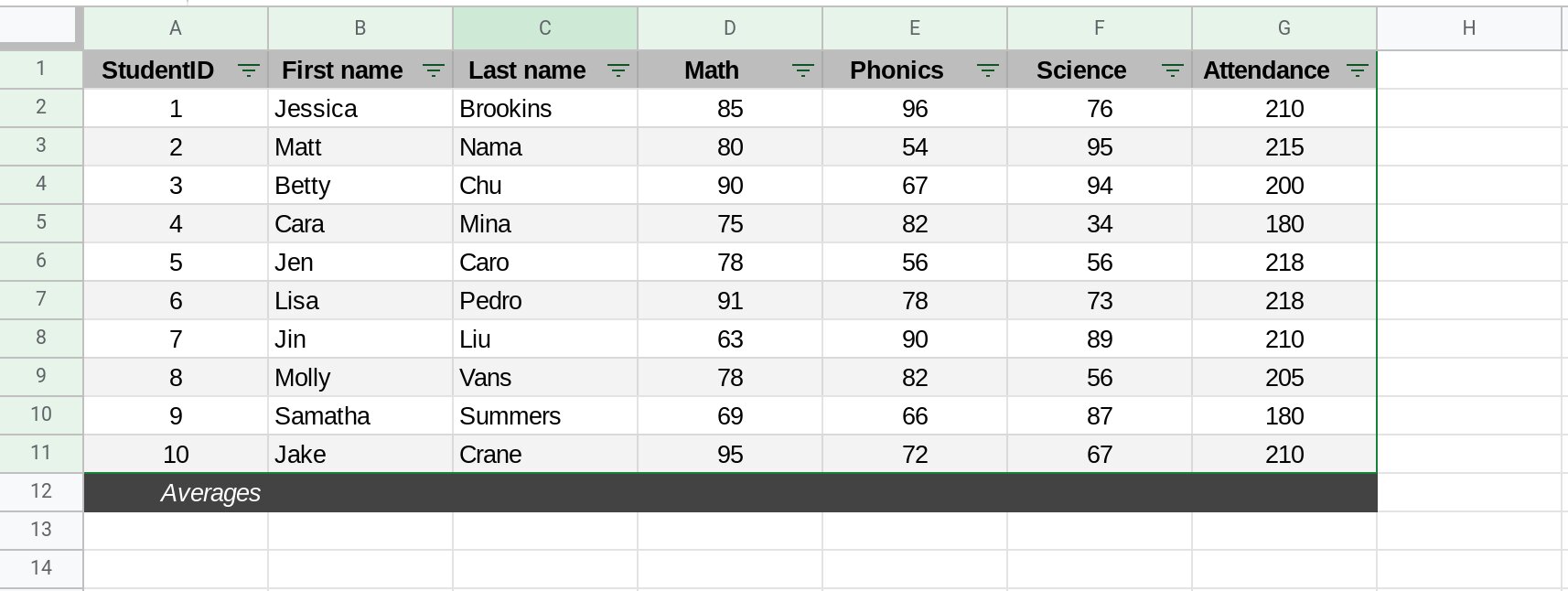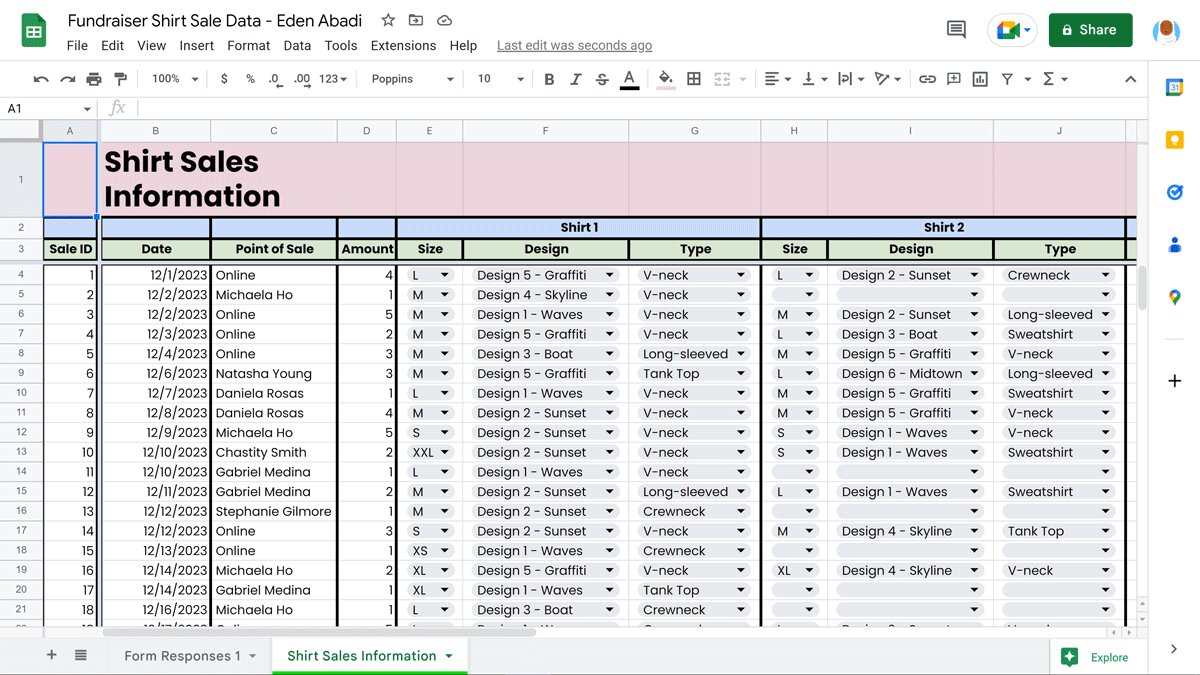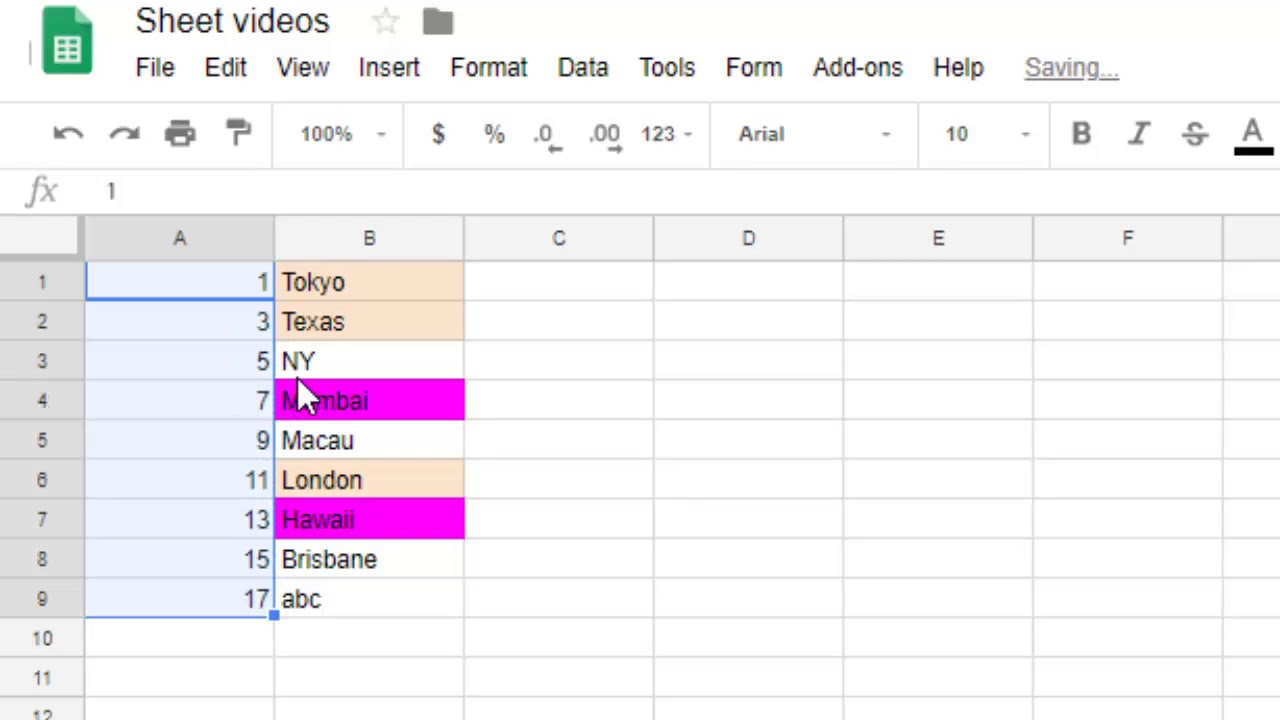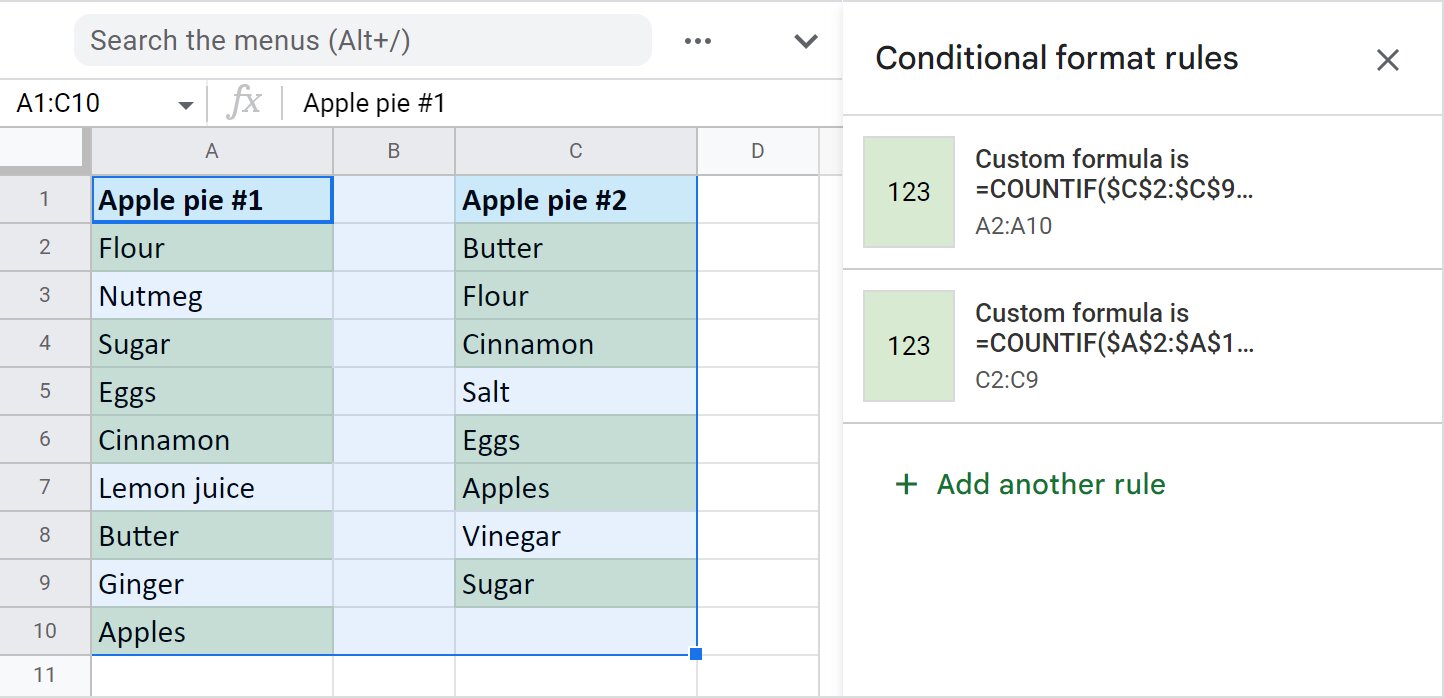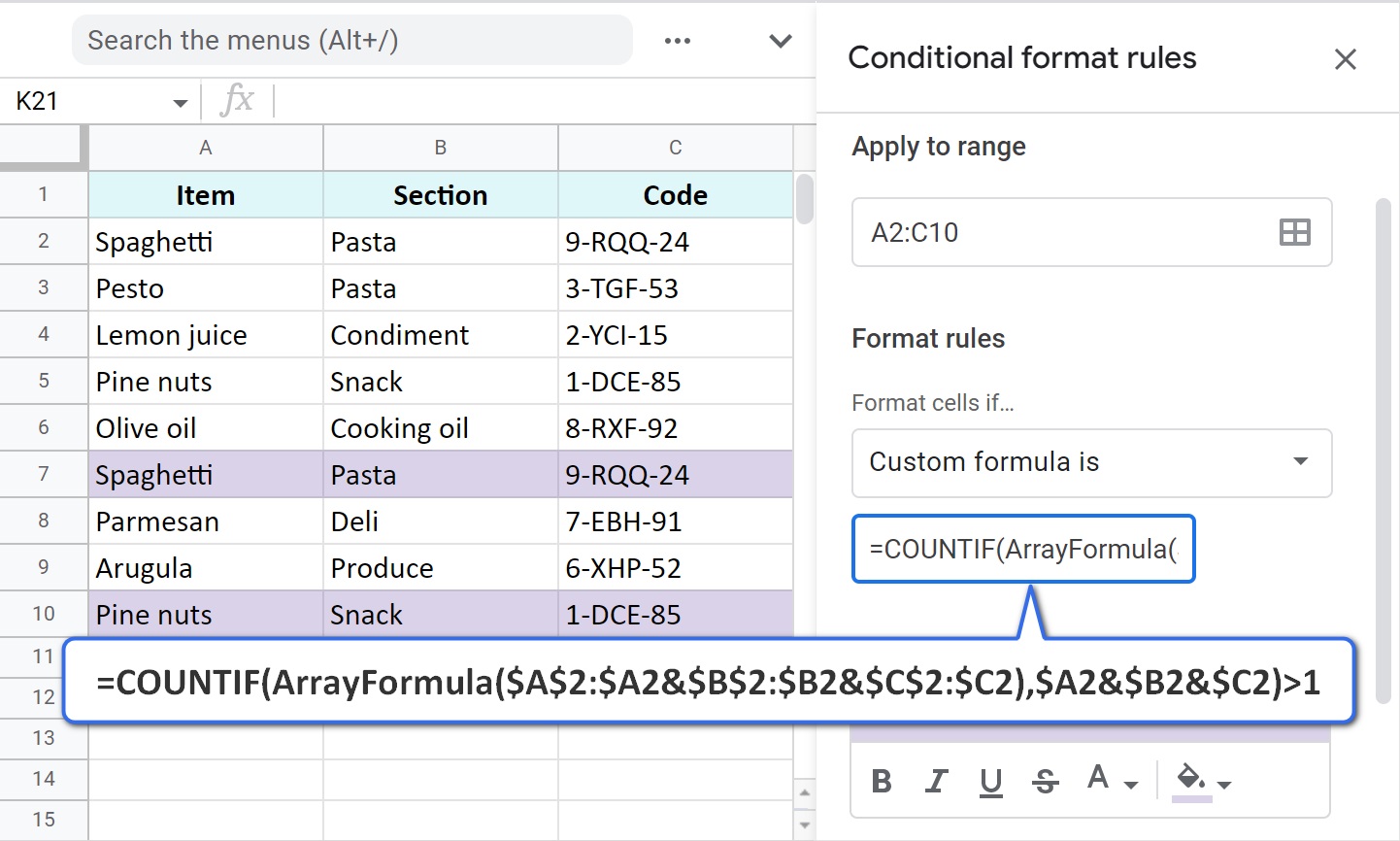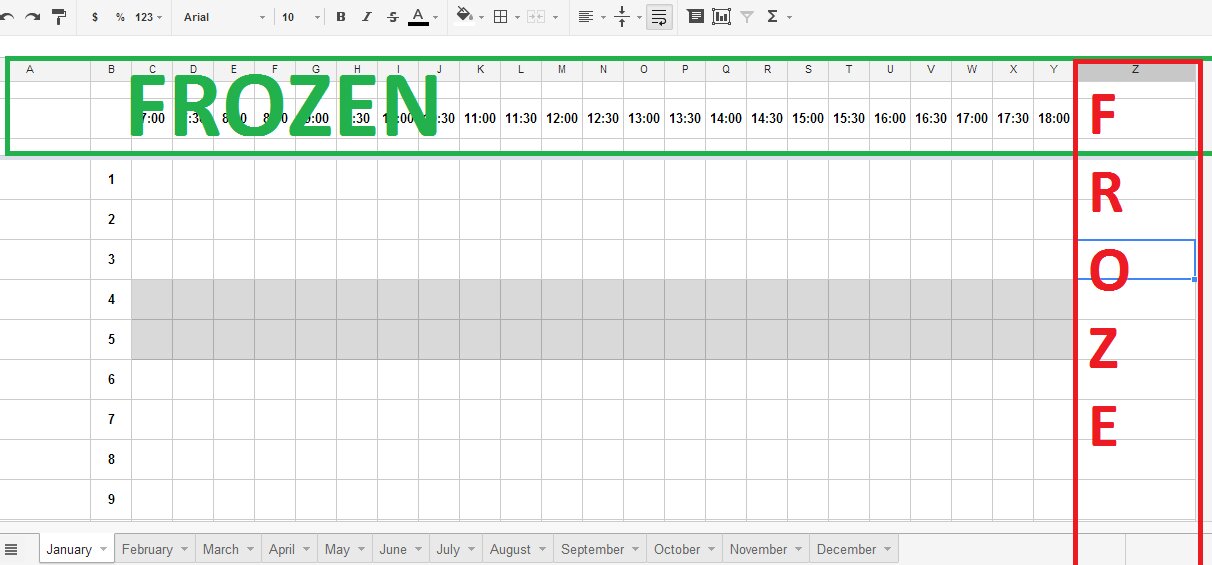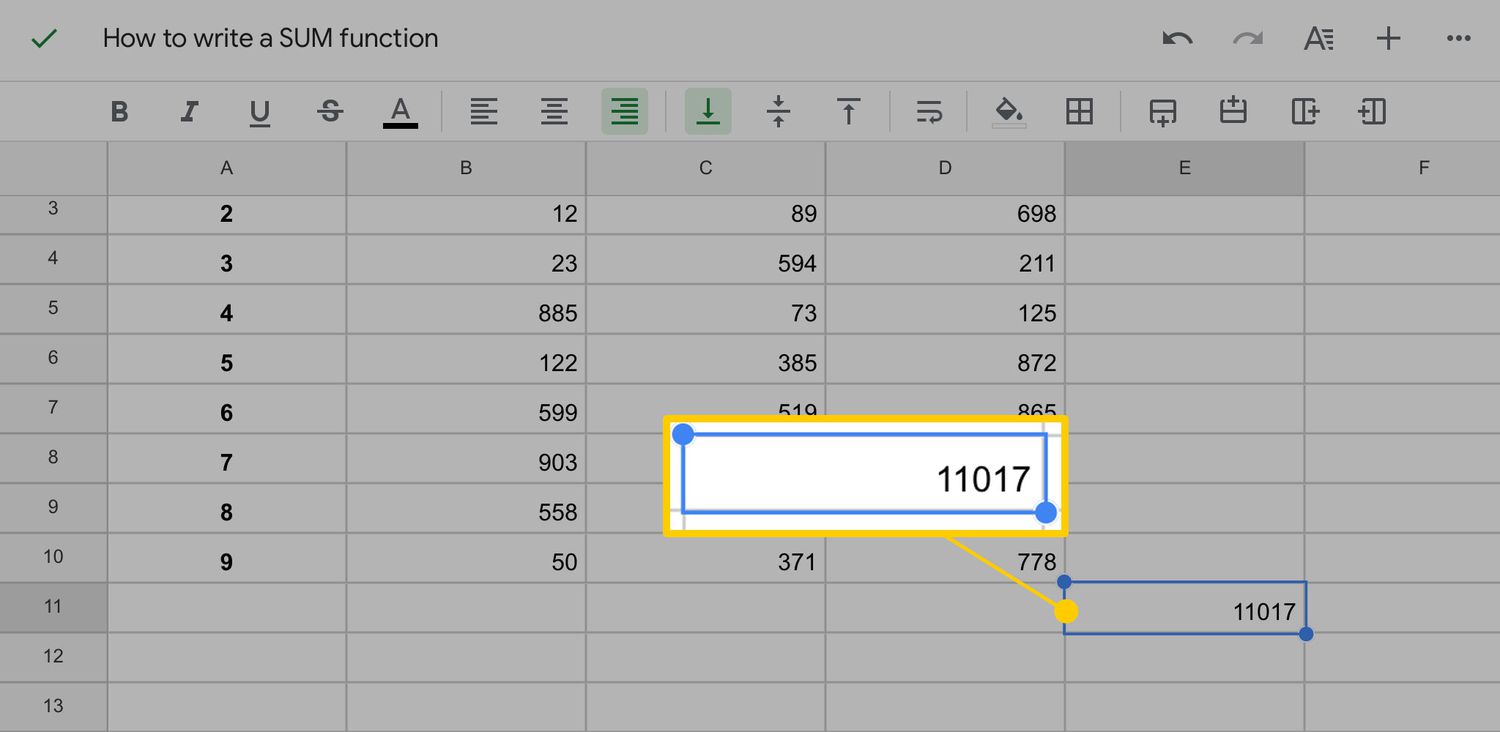Introduction
Google Sheets is a powerful spreadsheet application that allows users to perform calculations, analyze data, and automate tasks. One of the key features of Google Sheets is the ability to use formulas to perform calculations on the data in your spreadsheet. Formulas are expressions that tell Google Sheets to perform certain calculations based on the values in a range of cells.
Applying a formula to an entire column can save you a significant amount of time and effort. Instead of manually entering the formula in each cell of the column, you can simply apply the formula to the entire column and let Google Sheets do the work for you. Whether you need to calculate totals, averages, or perform more complex calculations, applying a formula to an entire column can simplify the process and ensure accuracy.
In this article, we will explore different methods to apply formulas to entire columns in Google Sheets. We will discuss using absolute references, array formulas, AutoFill, and the fill handle to accomplish this task. By the end of this article, you will have a solid understanding of how to apply formulas to entire columns in Google Sheets and some tips and tricks to make your spreadsheet work more efficiently.
Understanding Formulas in Google Sheets
Before we dive into the methods for applying formulas to entire columns in Google Sheets, let’s take a moment to understand the basics of formulas in this spreadsheet application. In Google Sheets, formulas are used to perform calculations, manipulate data, and automate tasks.
A formula in Google Sheets always begins with an equal sign (=) and can consist of various elements, such as numbers, operators, functions, and cell references. The purpose of a formula is to instruct Google Sheets on how to process and display the desired data.
Operators, such as addition (+), subtraction (-), multiplication (*), and division (/), are used to perform mathematical operations within a formula. Functions, on the other hand, are built-in formulas that automate complex calculations or processes. Google Sheets offers a wide range of functions, including SUM, AVERAGE, COUNT, IF, and many more.
Cell references allow you to use the values in specific cells within your formulas. A cell reference is represented by the column letter and row number, such as A1 or C4. By using cell references, you can create formulas that dynamically update based on changes to the referenced cells.
In addition to basic arithmetic and functions, Google Sheets supports a variety of advanced formulas and features, such as conditional formatting, data validation, and array formulas. These advanced features can greatly enhance the capabilities of your spreadsheet and help you analyze and manipulate your data more effectively.
Now that we have a basic understanding of formulas in Google Sheets, let’s explore the methods for applying them to entire columns. By doing so, we can quickly perform calculations and manipulations on a larger set of data without the need for repetitive manual entry.
Applying a Formula to an Entire Column
When working with a large dataset in Google Sheets, applying a formula to an entire column can save you time and effort. Instead of manually entering the formula in each cell of the column, you can apply the formula to the entire column and let Google Sheets automatically calculate the results for each cell.
There are several methods you can use to apply a formula to an entire column in Google Sheets. Let’s explore them:
Method 1: Using Absolute References
One way to apply a formula to an entire column is by using absolute references. An absolute reference locks the column or row of a cell in a formula, allowing it to remain fixed as the formula is copied across different cells. To apply a formula using absolute references, you need to use the dollar sign ($) before the column letter or row number in the cell reference.
Method 2: Using Array Formulas
Array formulas are powerful tools that allow you to perform calculations on multiple cells in one operation. To apply an array formula to an entire column, you can simply enter the formula in the first cell of the column and Google Sheets will automatically extend the formula to the rest of the column.
Method 3: Using AutoFill
AutoFill is a handy feature in Google Sheets that allows you to automatically fill a series of cells based on a pattern or existing data. To apply a formula to an entire column using AutoFill, simply enter the formula in the first cell of the column, click and hold the small blue square at the bottom right corner of the cell, and drag it down to fill the rest of the column.
Method 4: Using the Fill Handle
The fill handle is another convenient tool in Google Sheets for applying a formula to an entire column. Similar to AutoFill, you can use the fill handle to drag the formula down to fill the rest of the column. To use the fill handle, simply place your cursor on the bottom right corner of the cell with the formula, click, and drag it down to extend the formula to the desired range.
These methods provide efficient ways to apply a formula to an entire column in Google Sheets. Choose the method that best suits your needs and workflow to save time and streamline your data analysis and calculations.
Method 1: Using Absolute References
One of the ways to apply a formula to an entire column in Google Sheets is by using absolute references. Absolute references allow you to lock the column or row of a cell in a formula, ensuring that it does not change when the formula is copied to other cells.
To use absolute references in your formula, you need to add a dollar sign ($) before the column letter or row number. For example, if you have a formula that references cell A1, you can make the reference absolute by changing it to $A$1.
To apply a formula with absolute references to an entire column, follow these steps:
- Type the formula in the first cell of the column where you want to apply it.
- Edit the formula to include absolute references by adding the dollar signs before the column letter and row number, if needed.
- Press Enter to apply the formula to the first cell.
- Click on the cell with the formula to select it.
- Hover your mouse over the small blue square located at the bottom right corner of the selected cell.
- When the cursor changes to a plus sign (+), click and drag it down to fill the rest of the column with the formula.
Google Sheets will automatically adjust the formula for each cell in the column, while keeping the absolute references intact. This ensures that the formula calculates the correct values based on the corresponding cells in each row.
Using absolute references is particularly useful when working with formulas that involve constants or references to fixed cells. By locking the references with absolute references, you can apply the formula to an entire column without the need to manually adjust each cell reference.
By employing absolute references, you can speed up your data calculations and manipulation in Google Sheets while maintaining the accuracy of the results. Experiment with applying formulas with absolute references to entire columns and explore the versatility and flexibility they offer in your spreadsheet tasks.
Method 2: Using Array Formulas
Another method to apply a formula to an entire column in Google Sheets is by using array formulas. Array formulas allow you to perform calculations on multiple cells in one operation, saving you time and effort.
To use array formulas in Google Sheets, you need to input the formula in the first cell of the column where you want to apply it. The array formula will automatically extend to the rest of the column, applying the calculation to each cell.
Here’s how you can use array formulas to apply a formula to an entire column:
- Type the formula in the first cell of the column.
- Instead of pressing Enter to finish, press Ctrl + Enter. This tells Google Sheets that you want to input an array formula.
- The array formula will automatically extend to the rest of the column, applying the same calculation to each cell.
Array formulas are particularly useful when you need to perform calculations that involve multiple cells or ranges. They allow you to handle complex calculations and operations efficiently, without the need to manually copy and paste the formula to each cell in the column.
It’s important to note that array formulas can be sensitive to changes in the data. Modifying the data within the range covered by the array formula may result in unexpected errors or incorrect results. To avoid this, ensure that the range of the array formula covers all the necessary cells and remains consistent.
Using array formulas can improve the efficiency and accuracy of your calculations in Google Sheets. Experiment with applying array formulas to different scenarios and explore the dynamic capabilities they offer in analyzing and manipulating data within entire columns.
Method 3: Using AutoFill
An easy way to apply a formula to an entire column in Google Sheets is by using the AutoFill feature. AutoFill allows you to quickly fill a series of cells based on an existing pattern or data. By using AutoFill, you can apply a formula to a large range of cells without the need for manual copying and pasting.
Here’s how to use AutoFill to apply a formula to an entire column:
- Type the formula in the first cell of the column where you want to apply it.
- Press Enter to apply the formula to the first cell.
- Click and hold the small blue square at the bottom right corner of the selected cell.
- Drag the cursor down to fill the rest of the column with the formula.
As you drag the formula down, Google Sheets will automatically adjust the cell references in the formula to match the respective rows. This allows the formula to calculate the desired values based on the data in each row of the column.
AutoFill is not only limited to formulas, but it can also be used for other types of data as well, such as dates, numbers, or text. When the pattern is recognized by Google Sheets, it will fill the column with the appropriate values according to the pattern.
AutoFill is a convenient and time-saving feature in Google Sheets, making it easy to apply formulas to entire columns and handle repetitive tasks. Utilize AutoFill to streamline your data analysis and calculations, ensuring accuracy and efficiency in your spreadsheets.
Method 4: Using the Fill Handle
Another handy method for applying a formula to an entire column in Google Sheets is by using the fill handle. The fill handle is a small square located at the bottom right corner of a selected cell that you can drag to fill adjacent cells with a formula or data series.
Here’s how you can use the fill handle to apply a formula to an entire column:
- Type the formula in the first cell of the column where you want to apply it.
- Press Enter to apply the formula to the first cell.
- Place the cursor on the bottom right corner of the selected cell until it changes to a plus sign (+).
- Click and drag the fill handle down to fill the rest of the column with the formula.
As you drag the fill handle down, Google Sheets will automatically adjust the cell references in the formula, just like the AutoFill method. This ensures that the formula correctly calculates the desired values based on the corresponding rows in the column.
The fill handle is not limited to formulas; it can also be used to quickly fill cells with a series of data or text. For example, you can use the fill handle to populate a column with dates, numbers, or text patterns by simply dragging it down.
The fill handle provides a quick and efficient way to apply formulas to entire columns and streamline your spreadsheet tasks. By utilizing this feature, you can save time and effort while ensuring the accuracy and consistency of your formulas throughout the column.
Tips and Tricks for Applying Formulas to Entire Columns
Applying formulas to entire columns in Google Sheets can greatly enhance your productivity and streamline your data analysis. Here are some tips and tricks to make the process even more efficient:
1. Use relative or mixed references:
By using relative or mixed references in your formulas, you can make them more flexible and adaptable. Relative references automatically adjust when copied to different cells, allowing the formula to correctly calculate values based on the new relative positions. Mixed references, on the other hand, lock either the row or column so that it remains constant as the formula is copied.
2. Double-click the fill handle:
If you want to apply a formula to an entire column quickly, you can double-click the fill handle. Google Sheets will automatically extend the formula to the last adjacent cell with data in the same column. This is a handy shortcut when working with large data sets.
3. Use named ranges:
Named ranges can simplify the process of applying formulas to entire columns, especially when working with extensive datasets. By assigning a name to a range of cells, you can use that name in your formulas instead of manually typing the cell references. This makes your formulas more readable and easier to manage.
4. Combine multiple formulas:
If you have complex calculations that involve multiple formulas, consider combining them into a single array formula. Array formulas can perform calculations on a range of cells in one operation, eliminating the need for multiple separate formulas. This can make your spreadsheet more efficient and easier to maintain.
5. Be mindful of performance:
Applying formulas to entire columns can impact the performance of your spreadsheet, especially if you have a large dataset. Excessive calculations can slow down the system and may lead to errors or delays. To optimize performance, consider using efficient formulas, minimizing unnecessary calculations, and using filters or sorting to reduce the number of cells involved in the calculations.
By utilizing these tips and tricks, you can apply formulas to entire columns in Google Sheets more effectively. Experiment with different methods, explore advanced features, and find the approach that works best for your specific spreadsheet needs. With practice, you’ll become more proficient in applying formulas, saving time, and achieving accurate results in your Google Sheets projects.
Conclusion
In Google Sheets, applying formulas to entire columns is a powerful technique that can streamline your data analysis and calculations. Whether you need to perform simple mathematical operations, complex calculations, or automate tasks, applying formulas to entire columns can save you time and effort.
We explored various methods for applying formulas to entire columns in Google Sheets. Using absolute references allows you to lock cell references and apply formulas consistently. Array formulas enable you to perform calculations on multiple cells in one operation. AutoFill and the fill handle provide quick and efficient ways to extend formulas to entire columns.
As you work with formulas in Google Sheets, it’s important to understand the basics of formulas, such as operators, functions, and cell references. This knowledge will empower you to build more advanced and dynamic formulas to meet your specific needs.
Additionally, we shared some tips and tricks to optimize your formula application process. Using relative or mixed references, double-clicking the fill handle, using named ranges, combining multiple formulas, and being mindful of performance can all contribute to a more efficient and effective spreadsheet workflow.
By mastering the art of applying formulas to entire columns, you can enhance your productivity, accuracy, and analysis capabilities in Google Sheets. So, dive into your spreadsheet projects, explore different formula application methods, and leverage the power of formulas to unlock the full potential of your data.







